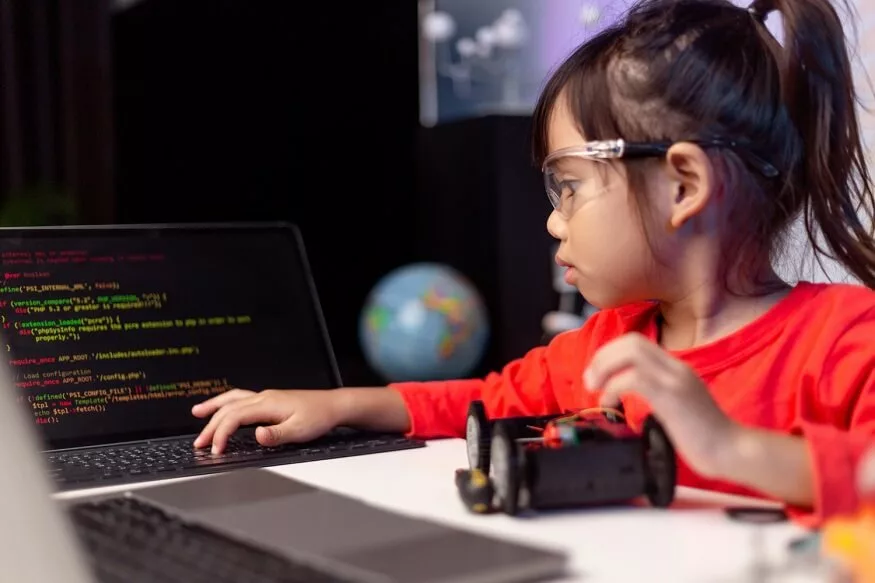In the ever-evolving landscape of education, introducing coding to preschoolers has become a transformative way to cultivate problem-solving skills, logical thinking, and creativity from a young age. However, the concern over screen time for little ones has led to a rise in interest for screen-free coding activities. In this exploration, we delve into the exciting world of coding for preschoolers, exploring screen-free activities that ignite the sparks of curiosity and lay the foundation for future computational thinking.
Why Coding for Preschoolers?
Cultivating Critical Skills
Introducing coding to preschoolers is not about creating the next generation of software developers. Instead, it’s about cultivating critical skills such as logical thinking, problem-solving, and creativity from a young age.
Laying the Foundation for Computational Thinking
Coding activities for preschoolers lay the groundwork for computational thinking—an essential skill in today’s digital age. Computational thinking involves breaking down complex problems into smaller, more manageable parts.
Fostering Early Interest in Technology
Early exposure to coding fosters an interest in technology and innovation. By making coding activities enjoyable and accessible, preschoolers begin to see technology as a tool for creativity and problem-solving.
Also Read: Name Writing Activities for Preschoolers And It’s Benefits
Coding Languages for Beginners
- Visual Coding Languages: For preschoolers, visual coding languages are ideal. These languages use graphical elements, such as blocks and puzzles, to represent code. Popular visual coding languages include ScratchJr, Blockly, and Code-a-pillar.
- Unplugged Coding: Unplugged coding involves activities that don’t require a screen or device. This can include physical games, puzzles, and activities that teach coding concepts through hands-on engagement.
- Simple Commands: Introducing preschoolers to simple coding commands helps build a foundation for understanding more complex concepts later on. Concepts like sequencing, patterns, and algorithms can be taught through age-appropriate activities.
Screen-Free Coding Activities
- Coding with Storytelling: Utilise storytelling to introduce coding concepts. Create a simple story with characters and a plot, and let preschoolers use commands (represented by cards or drawings) to guide the characters through the story. This fosters understanding of sequencing and cause-and-effect.
- Shape and Colour Coding: Introduce coding concepts through shapes and colours. Assign specific colours or shapes to different actions or movements. For example, red might mean “move forward,” and blue might mean “turn left.” Preschoolers can then follow these visual cues to create a sequence.
- Movement and Dance Coding: Transform coding into a physical activity by incorporating movement and dance. Create a coding dance routine where each movement corresponds to a specific code. This not only teaches coding concepts but also promotes physical activity and coordination.
- Building a Code-a-Pillar: Code-a-pillar is a physical toy designed to teach coding concepts. Preschoolers can arrange segments of the Code-a-pillar in different orders to create a sequence of movements. This tactile and visual approach makes coding tangible and fun.
- Board Games with a Coding Twist: Modify traditional board games to include coding elements. For example, use a dice to determine the number of spaces a player moves and cards with coding commands to dictate how the player navigates obstacles on the board.
Learning Coding Through Play
- Coding Puzzles: Introduce coding concepts through puzzles. Create puzzles where preschoolers need to arrange pieces in a specific order to complete a picture or reach a goal. This builds an understanding of sequencing and logic.
- Treasure Hunt Coding: Organise a treasure hunt where each clue represents a coding challenge. Preschoolers need to decipher the code to find the next clue. This activity promotes problem-solving and critical thinking.
- Memory Match Coding: Develop memory skills and coding concepts through a memory match game. Create pairs of cards with coding commands, and preschoolers need to find matching pairs. This enhances memory while reinforcing coding vocabulary.
- Coding Bingo: Transform the classic bingo game into a coding activity. Instead of numbers, use coding commands on bingo cards. Call out actions, and preschoolers mark the corresponding command on their cards. This promotes familiarity with coding vocabulary.
Also Read: How Technology Education Can Prepare Children for the Future
Practical Tips for Introducing Coding
Start with Simple Concepts
Begin with simple coding concepts and gradually introduce more complex ideas as preschoolers become familiar with the basics. Starting small ensures that coding remains enjoyable and not overwhelming.
Use Age-Appropriate Tools
Choose coding tools and languages that are specifically designed for preschoolers. Apps like ScratchJr and tangible toys like Code-a-pillar are age-appropriate and provide a gentle introduction to coding.
Encourage Collaboration
Foster a collaborative learning environment. Coding activities can be done in groups, allowing preschoolers to learn from each other, share ideas, and work together to solve coding challenges.
Active Participation
Parents can actively participate in coding activities. Engage in coding games, create coding challenges at home, and celebrate small achievements. Parental involvement reinforces the idea that coding is a fun and shared activity.
Provide Encouragement
Positive reinforcement is crucial. Encourage preschoolers when they solve a coding challenge or complete a sequence successfully. Celebrate their achievements, fostering a positive attitude towards learning.
Create a Coding-Friendly Environment
Designate a coding-friendly space at home with age-appropriate tools and resources. Having a dedicated space for coding activities signals to preschoolers that coding is an important and enjoyable part of their learning journey.
Also Read: 20 Fun Name Activities For Preschoolers And Its Benefits
Coding Challenges For Preschoolers
- Screen Time Concerns: Balancing the benefits of coding activities with concerns about excessive screen time can be a challenge for parents and educators.
- Attention Span: Preschoolers may have short attention spans, making it challenging to sustain focus on coding activities.
- Reading Skills: Coding often involves reading instructions or understanding symbols, which can be a hurdle for preschoolers who are still in the early stages of literacy.
- Language Barriers: Coding often involves understanding and using specific programming languages, which may be challenging for preschoolers who are still mastering their native language.
- Limited Prior Knowledge: Preschoolers lack prior knowledge of mathematical and logical concepts, which are foundational to coding.
- Social Interaction: Coding activities can be solitary, potentially limiting social interaction, which is crucial for preschoolers’ social development.
- Parental Involvement: Coding activities for preschoolers often require active parental involvement, which may not be feasible for all families.
- Limited Repetition: Preschoolers benefit from repetition for learning, and coding activities may not always provide enough opportunities for repeated practice.
Also Read: How to Get Your Kids Interested in Robotics
As EuroSchool guides these young minds through the enchanting world of coding, we do more than teach; we ignite a passion for exploration, problem-solving, and, most importantly, the joy of learning—a symphony of growth that will resonate throughout their educational journey and beyond.










